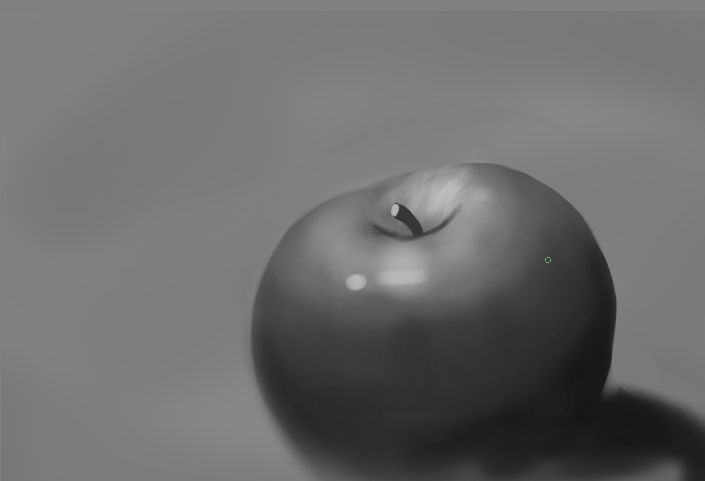Hello everyone, SarcasmNymph here for another Tuesday Tips and today we are talking about values. So if you are a painter, primarily a digital painter, you would have heard about values and the idea of painting in grayscale.
But what does that mean?
Value refers to the lightness/illumination of the hue you are painting with. White patches are the highest values and pitch black darkness are the lowest values. An efficient way to see the form in digital painting is to have an all-black color layer on top of all your layers.
"Form" is an artists way of using hues, colors and values and are other art principles to paint objects that are three dimensional and enclose space.
Even if you are the kind of artist that creates some of the most out of this world beasts, characters, and fantasy lands or have the most cartoonish style, the basic principles of lighting still applies to you. Before you can have more stylistic paintings, it is crucial to observe at least and have a first understanding of how the form works in real life. That is where this exercise comes in. Not only does it make you practice observing these things in your references, but it also helps you develop an intuitive understanding of how values play with each other and hence can play in your future paintings.
The first step to do your study is to look at your reference in grayscale. For this exercise,
I will be using this image:

For simplicity, I will be focusing just on the subject, the apple in this case and not the grass. However, feel free to use whatever image you want to use for your study and include background details if you want.
So at first, you should look at the underlying shades and values of the image. Just the general, most prominent patches, and replicate that in your painting. By this, I mean to just look at the dark parts of the picture, the extreme light parts, and the mid tones. Forget about the details like the texture of the apple, the dots, or the specific shape.
This should give something like this:

As you can see, the shape is not quite the same as the original, but the general sense of shadows and light reflection is well placed, and it's already looking pretty good.
Now that we have a general idea of the main value patches, fix the shape of those values. You don't have to be exactly accurate with the shape, but try to be as close as possible.
Ok, but why do I care?
Even if you are the kind of artist that creates some of the most out of this world beasts, characters, and fantasy lands or have the most cartoonish style, the basic principles of lighting still applies to you. Before you can have more stylistic paintings, it is crucial to observe at least and have a first understanding of how the form works in real life. That is where this exercise comes in. Not only does it make you practice observing these things in your references, but it also helps you develop an intuitive understanding of how values play with each other and hence can play in your future paintings.
Convinced! But how do I paint with just values?
The first step to do your study is to look at your reference in grayscale. For this exercise,
I will be using this image:

For simplicity, I will be focusing just on the subject, the apple in this case and not the grass. However, feel free to use whatever image you want to use for your study and include background details if you want.
Step 1: Locate widespread values
So at first, you should look at the underlying shades and values of the image. Just the general, most prominent patches, and replicate that in your painting. By this, I mean to just look at the dark parts of the picture, the extreme light parts, and the mid tones. Forget about the details like the texture of the apple, the dots, or the specific shape.
This should give something like this:

As you can see, the shape is not quite the same as the original, but the general sense of shadows and light reflection is well placed, and it's already looking pretty good.
Step 2: Shaping the form.
Now that we have a general idea of the main value patches, fix the shape of those values. You don't have to be exactly accurate with the shape, but try to be as close as possible.
This should provide you with something like:

Now, focus on the area that bothers you the most that's different from the original reference, and refine that just a little bit. Next, do that for all the main parts of the image. Now is the time to also start noticing some of the details like a few dots, lines, etc. However, still focus on the general shape more than the minute details. Remember, the idea is not to replicate the reference, but to understand how the values work with the image.

The last step isn't as refined as it can be. This is where the final step comes in. Now that you have the general form done, repeat all the steps above for more zoomed in regions, and do that for all parts of the image that you want to be refined. From this point on all, you can notice more specific values like lines, specifics light spots, smaller shadows, etc. and keep adding details until you are satisfied. This is the final form I got, but by all means, stop before or after this point:


Step 3: Refine the values
Now, focus on the area that bothers you the most that's different from the original reference, and refine that just a little bit. Next, do that for all the main parts of the image. Now is the time to also start noticing some of the details like a few dots, lines, etc. However, still focus on the general shape more than the minute details. Remember, the idea is not to replicate the reference, but to understand how the values work with the image.

Step 4: Repeat
The last step isn't as refined as it can be. This is where the final step comes in. Now that you have the general form done, repeat all the steps above for more zoomed in regions, and do that for all parts of the image that you want to be refined. From this point on all, you can notice more specific values like lines, specifics light spots, smaller shadows, etc. and keep adding details until you are satisfied. This is the final form I got, but by all means, stop before or after this point:

Final Take Away
As you might notice just from a simple observation of values, an image can be made to look lifelike, and we can understand a lot about the shape of different objects and their interaction with light. It's important to repeat this exercise with unfamiliar subject matter to have a better understanding of new material.
So what do you guys think? Do you struggle with form, values, etc. or do these things come naturally to you? Let me know in the comments!
Skin by SimplySilent
